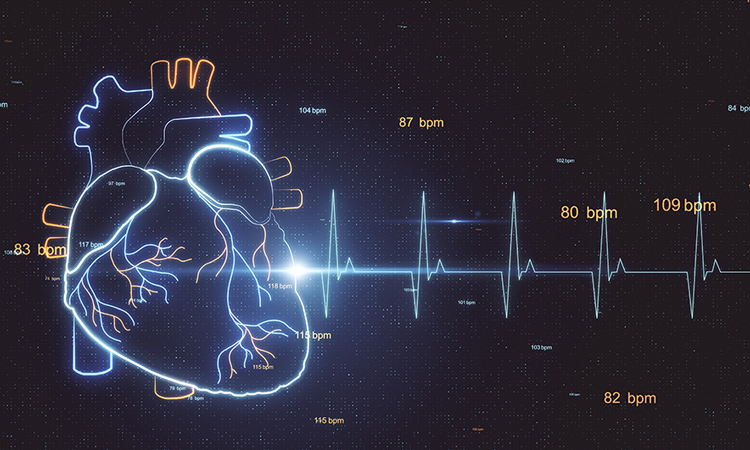Near-term prediction of sustained ventricular arrhythmias applying artificial intelligence to single-lead ambulatory electrocardiogram
https://doi.org/10.1093/eurheartj/ehaf073
Background and Aims
Accurate near-term prediction of life-threatening ventricular arrhythmias would enable pre-emptive actions to prevent sudden cardiac arrest/death. A deep learning–enabled single-lead ambulatory electrocardiogram (ECG) may identify an ECG profile of individuals at imminent risk of sustained ventricular tachycardia (VT).
Methods
This retrospective study included 247 254, 14 day ambulatory ECG recordings from six countries. The first 24 h were used to identify patients likely to experience sustained VT occurrence (primary outcome) in the subsequent 13 days using a deep learning–based model. The development set consisted of 183 177 recordings. Performance was evaluated using internal (n = 43 580) and external (n = 20 497) validation data sets. Saliency mapping visualized features influencing the model’s risk predictions.
Results
Among all recordings, 1104 (.5%) had sustained ventricular arrhythmias. In both the internal and external validation sets, the model achieved an area under the receiver operating characteristic curve of .957 [95% confidence interval (CI) .943–.971] and .948 (95% CI .926–.967). For a specificity fixed at 97.0%, the sensitivity reached 70.6% and 66.1% in the internal and external validation sets, respectively. The model accurately predicted future VT occurrence of recordings with rapid sustained VT (≥180 b.p.m.) in 80.7% and 81.1%, respectively, and 90.0% of VT that degenerated into ventricular fibrillation. Saliency maps suggested the role of premature ventricular complex burden and early depolarization time as predictors for VT.
Conclusions
A novel deep learning model utilizing dynamic single-lead ambulatory ECGs accurately identifies patients at near-term risk of ventricular arrhythmias. It also uncovers an early depolarization pattern as a potential determinant of ventricular arrhythmias events.
Evaluating the role of large language models in traditional Chinese medicine diagnosis and treatment recommendations
https://doi.org/10.1038/s41746-025-01845-2
Abstract
Digital health technologies hold significant potential for reducing global healthcare disparities. Large language models (LLMs) offer new opportunities to enhance access to culturally specific healthcare, including traditional Chinese medicine (TCM). This study evaluated the diagnostic and treatment performance of seven publicly available LLMs using a real-world acupuncture case, comparing their outputs with three professional acupuncturists across five domains: Western diagnosis, TCM diagnosis, acupoint selection, needling technique, and herbal medicine. Twenty-eight expert evaluators from China, South Korea, and the United States assessed the responses using a multilingual survey. LLMs performed comparably to acupuncturists in Western diagnosis and showed variable performance in TCM-specific tasks. GPT-4o, Qwen 2.5 Max, and Doubao 1.5 Pro demonstrated the highest alignment with expert evaluations, particularly in TCM diagnosis and acupoint selection. These findings highlight the potential of general-purpose LLMs to support culturally grounded medical decision-making and reduce access barriers in TCM



